UV Lighting Applications



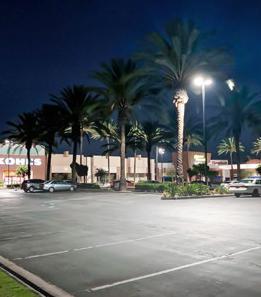















Congratulations to the following individuals for earning their professional designations!
CERTIFIED APPRENTICE LIGHTING TECHNICIAN ™ (CALT ™ )
CANDELA SYSTEMS CORPORATION
Bryce Galella, CALT
COLORADO LIGHTING, INC. Ryan Gallagher, CALT
CORPORATE ELECTRIC COMPANY LLC
Michael Dennison, CALT
ENERGY MANAGEMENT COLLABORATIVE
Patrick Beery, CALT
Erik Dietz, CALT
Paul R. Gallmeier, CALT Angela Henderson, CALT Stephen Lee, CALT
James D. Nelson, III, CALT Marc Radinzel, CALT Andrew Reitz, CALT Benjamin Rodman, CALT Mike Sullivan, CALT David Trudeau, CALT
STAY-LITE LIGHTING, INC.
Chris Anderson, CALT Jane Kraemer, CALT Austin Posthuma, CALT Levi Rote, CALT Matthew Vogt, CALT
STS LIGHTING SERVICES INC
Dimitri Papadakis, CALT
YESCO, LLC
Joe Hanna, CALT
INDIVIDUALS
Alejandro Ayala-Prado, CALT Spencer Mallonee, CALT
Samuel Drew McNally, CALT Derrick Mctavish, CALT Sumerlin Munroe, CALT Jimmy Ortega, CALT Brandon Stevens, CALT
CERTIFIED SENIOR LIGHTING TECHNICIANS ™ (CSLT ™ )
ENERGY MANAGEMENT COLLABORATIVE
Leah Epp, CSLT, CLCP Micah Farenik, CSLT, CLCP Cara Lee Hotchkiss, CSLT
LUMATECH
William R. Simpson, CSLT
INDIVIDUALS
Amanda Nicole Hurst, CSLT Daniel Hurst, CSLT
NEW CERTIFIED LIGHTING CONTROLS
PROFESSIONAL ® (CLCP ™ )
CANDELA SYSTEMS CORPORATION Jesus David Ramirez, CSLT, CLCP
ENERGY MANAGEMENT COLLABORATIVE
Leah Epp, CSLT, CLCP Micah Farenik, CSLT, CLCP
JOHNSON CONTROLS LIGHTING SERVICES
Joseph Michael McFadden, CLCP
SEQUOYAH ELECTRICAL & NETWORK SERVICES
Mike Sintzel, CLCP
INDIVIDUALS
Mitch Houck, CLCP Eric Rehn, CLCP
CONTEMPORARY ENERGY SOLUTIONS
PO Box 963
Manitowoc, WI 54221
Phone: (423) 763-3101 www.ces-na.com/
Contact: Nick Lewis, nick@ces-na.com
GREENTECH SOLUTIONS GROUP
2700 Sumner Blvd Ste 124 Raleigh, NC 27616-3258 Phone: (984) 200-9169 www.greentechsolutionsgroup.com
Contact: Glenn Edmonds, gedmonds@greentechnc.com
BRILLED LIGHTING
156 S 600 W
Logan, UT 84321-5026 Phone: (435) 932-0867 www.BrilledLighting.com
Contact: Joe Cullumber, President, sales@brilledlighting.com
DWM Holdings
E23171 Groesbeck Hwy.Warren, MI 48089 Phone: (586) 218-6352 https://dwmholdings.com/
Contacts: Christina Calaway, CLMC, National Sales, Manager, christinaca@polemfg.com
Kelly MacVoy Guffey, Chief Revenue Officer, kellyg@polemfg.com
LITTMAN BROS. LIGHTING 845 S Roselle Rd Schaumburg, IL 60193-3964
Phone: (847) 275 5819 https://lightingreimagined.com/
Contact: Christopher Dobroth, Sr. Director, ECommerce & Digital Marketing, chris@littmanbros.com
MYSUPPLIER.COM
5935 Shiloh Road East, Suite 400 Alpharetta, GA 30005 Phone: (404) 717-4411 www.mySupplier.com
Contacts: Anita Reed, Anita.Reed@mysupplier.com
Kavita Goyal, Operations and Marketing Admin, kavita.goyal@mysupplier.com
Taresh Grover, taresh.grover@mysupplier.com
Daniel Magee, Vice President of Solutions, daniel.magee@mysupplier.com
Matt Russell, National Accounts Manager, matt.russell@mysupplier.com
Chandan Sahoo, Sales and Business Development, chanda.sahoo@mysupplier.com
Ginger Zeiders, Lighting Auditor, ginger.zeiders@mysupplier.com
Michael Zukowski, National Account Manager, mike.zukowski@mysupplier.com
Juan Sanchez
New York City Department of Citywide Administrative Services
PO Box 20117, Greeley Square Station New York, NY 10001
Phone: (212) 386-5057 neojs77@startmail.com www.nyc.gov/energy-conservation


 NALMCO UV Li…
NALMCO UV Li…
Illustration 1
1. Intense Room Disinfection Technology (using 254nm UVC wavelength) and Upper Room Disinfection Technology (using 254nm UVC wavelength)
In general, UV technology solutions that use the 254nm UVC wavelength work well. This wavelength can effectively inactivate many common viruses and bacteria and it can be cost-effective to implement. And this UV technology solution usually works well with legacy fluorescent luminaires (and newer LED lighting systems).
A major drawback for the 254nm Intense Room Disinfection approach is it cannot be used in a space while occupied due to concerns over injuries that can be caused by exposure of human skin and eyes to the 254nm UVC. Typically, this technology application would be used in the evening time as an hour-long dose to help control pathogens in the room.
For the Upper Room Air Disinfection approach using 254nm UVC lamps, the UV light is aimed toward the ceiling, helping to treat the air that is circulating through the room. Assuming an 8 ft. ceiling height or higher, the UV light addresses the circulating air above the occupants’ heads, but it does not treat any of the surfaces below eye level in the space. While this technique does allow for the system to operate while occupants are present, additional caution during commissioning is imperative to make sure any occupants are protected against UV overexposure from either direct or reflected 254nm UVC. This approach is generally less obtrusive
than the Intense Room Disinfection (254 nm) approach, but it is often more expensive on per-square-foot basis in comparison.
2. Intense Room Disinfection (using Pulsed Xenonbased Technology)
Another solution is the Intense Room Disinfection approach using pulsed xenon-based technology, which is a relatively new type of UV disinfection technology. This approach is similar to the Intense Room Disinfection using 254nm UVC, but is not as obtrusive when not in use, as the technology fits more easily into various fixtures and spaces. The pulsed xenon lamps have wavelengths ranging from 200nm up to 1,000nm, and they are exceptionally powerful. With the broad band coverage in UVA, UVB and UVC bands and high output, pulsed xenon is very fast-acting against pathogens. Solutions that use pulsed xenon lamps can be considered for unoccupied spaces only.
3. Continual Room Disinfection (using filtered 222nm UVC) and Luminaire Onboard Air Disinfection (using targeted 254nm lamps).
A third approach to UV disinfection incorporates the filtered far-UVC 222nm wavelength in the Continual Room Disinfection example. A primary difference in this approach is that filtered 222nm far-UVC has been suggested to not pose a health risk for human eyes and shown to not pose a health risk to human skin when used within appropriate parameters, which allows it to

be applied throughout the day and night in occupied or unoccupied spaces for continual pathogen control.
To clarify, it is continual pathogen control and not continuous, meaning that this technology application can be turned on and off every few minutes on a regular cadence so as to remain within safety guidelines while providing ongoing pathogen control. For example, every three minutes or every six minutes this type of UVC light can be applied and occupants can have the freedom to work throughout that space at any time of day or night.
Finally, Luminaire Onboard Air Disinfection technology is an offshoot of the 254nm solutions that provides a more targeted approach. It uses an enclosed fixture that may also include ambient illumination to take in air from the immediate surrounding area and run it through its own filtration with a 254nm lamp with UV emissions fully contained inside. The luminaire then pushes that treated air back into the room. This approach is more localized to where pathogens are potentially introduced into a space compared to having the 254nm lamps installed in an HVAC system. Therefore, it is able to treat the air and turn it over numerous times per hour right in the space where the occupants are located. It is also safer for occupants than other 254nm solutions because they are not directly exposed to the 254nm wavelength whatsoever.
Once a UV disinfection solution has been evaluated for a space, especially an occupied space, determining the appropriate UV dosage is essential.
The American Conference of Governmental Industrial Hygienists (ACGIH®) is a charitable scientific organization advancing occupational and environmental health. ACGIH has published guidelines for the level of UV exposure that a typical worker can be exposed to without adverse health effects. The levels of exposure in the guidelines are quantified as Threshold Limit Values, or TLVs. The TLVs are published as a Time Weighted Average (TWA). For example, the ACGIH 8-hour TLV-TWA using the 222nm filtered far-UVC wavelength is currently set at 22 mJ/ cm2. (For more specific and technical information about exposure level guidelines, the ACGIH 2020 TLVs® and BEIs® handbook may be consulted.)
To further determine dosage, when designing a space incorporating a UV disinfection technology—especially any spaces intended for occupants—it is important
to simultaneously evaluate the safety considerations as well as where the pathogens are to be targeted. To help in this process, software tools are available that function similarly to lighting software design tools. These tools are tuned to specifically analyze a proposed space, the proposed UV technology, and the operating characteristics of the UV system in order to get to that allimportant dose quantity. Other input needs include good data on reflectance values, time of operation, data on pathogens of interest (e.g., types of bacteria, viruses) and the previously referenced ACGIH guidelines.
To help illustrate some of the design steps to consider for a given space, Illustration 2 shows the layout of a conference room as an example, which for demonstration purposes, will use a filtered far-UVC 222nm solution where the filtered 222nm module has been incorporated in 2 x 2 ceiling luminaires.
In an occupied space, a good first step is to review the areas where people will be interacting and the surface areas to target for pathogen reduction.
To consider as a holistic design, there is the visible portion of the system (the lighting in the space) to evaluate alongside the UV intended for pathogen reduction. This is coupled with an analysis of the UV wavelength technology being considered and the inherent operating characteristics involved. And on the safety side, the system (in this example) is designed to pulse the 222nm UV to deliver a dose that is not going to exceed the ACGIH guidelines, which are defined for an eight-hour window of time.
The safety calculations in this example make the assumption that an individual occupant is going to be


Prior to COVID-19 most applications for GUV centered on hospitals and medical facilities. Since March 2020, however, end users are utilizing GUV in schools, offices, hospitality, restaurants, and other applications. The consensus is that regardless of a vaccine for COVID -19, disinfecting air and spaces will remain a concern for years to come. As the Centers for Disease and Prevention (CDC) has stated from the outset of the pandemic, the best solutions will involve multiple means of disinfection and protection. These will likely include GUV, chemical disinfectants, the use of masks, HEPA filtration and other technologies. While it is impossible to provide 100 percent germ-free environments while spaces are occupied (since occupants can constantly be re-infecting spaces), GUV solutions can be part of a what I like to call a Constant Viral Load Reduction (CVLR) program.
Initial interest has been high for portable UVC disinfection units. They allow end users to leverage their spend using the same fixture for several rooms, or moving the portable unit to different locations in a larger space in order to provide complete disinfection. Portable units come in a variety of sizes, from small 38W tabletop units suitable for disinfecting small areas to large 1,000W carts that can disinfect 20,000 square feet of open space in 60 minutes. There is a linearity to the power of the unit, the amount to invest, and the time it takes to disinfect a space.
When comparing a GUV solution to chemical disinfection, compare the upfront cost of GUV equipment to the ongoing cost of chemicals. Disinfectants can be much more expensive than cleaners, costing as much as $8.00 a gallon. In addition, consider the labor to apply the disinfectants, estimated to be 350-400 square feet an hour. But once a path is decided to utilize GUV, it is
important to balance the capital budget to purchase GUV equipment versus the manpower to operate the equipment that has been purchased.
Whether using permanently mounted fixtures or portable disinfection units, specification of the proper solution that will inactivate 99.99 percent of viruses and bacteria is a combination of UV intensity, irradiance distribution, and delivered UV dosing to all areas that are to be disinfected. Based on the product specified, there is a need to confidentially be able to recommend the run time for a specific room required to eliminate the pathogens in a space.
The following example will look at solutions to disinfect a typical school classroom. The examples illustrate the ability to choose different solutions to accomplish the same task, each requiring different capital and labor investments.
Permanently Mounted Fixtures using 254nm UV One option would be to install 2X4 grid troffers utilizing four GUV lamps, each producing 117 uW/cm2 for a total UV irradiance of 468 uW/cm2. As seen here, if two fixtures are installed in the classroom, the space can be disinfected in five to 10 minutes. While some surfaces, such as the desk directly beneath the fixture are disinfected in a minute, the fixtures need to be kept on for 10 minutes in order to expose the areas receiving the lowest exposure to the required 5mj/cm2 that has been shown to deactivate SARS- COVID-2. These fixtures could only operate when the space is vacant and would require a safety control system as well to insure it would not operate when the room is occupied.
To illustrate the linearity previously discussed, if the number of fixtures are reduced from two to one, it is now taking twice as long, or 20–25 minutes to disinfect the space.
as the space is occupied. Installed cost is higher than 254nm due to the additional fixtures required, but other options can include just one fixture over the teacher for partial area disinfection.


Permanently Mounted Fixtures using 222nm UV

Another fixture option would be to install 222nm or far-UV fixtures. Initial studies have shown that farUV does not penetrate human or animal skin or eyes, so fixtures could provide continuous disinfection of occupied spaces. Using five fixtures can obtain a very comprehensive disinfection that is continuous all day
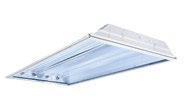
Portable Carts using 254nm UV
Portable carts offer a way for end users to leverage their capital spend, since a portable cart can do multiple rooms. However, labor costs increase since the cart needs to be moved from room to room, and even within the room. With carts there is the option of investing in more powerful units that can disinfect a space more quickly. But of course, these units cost more money.
In the example pictured the standard 300W cart produces 640 uW/cm2. It would disinfect the classroom in one hour and would need to be moved across the room after 30 minutes. The more powerful 300W Plus unit produces more than twice the amount of UV irradiance as the standard unit but would still need to be moved across the room once for the quickest disinfection time.

Standard 300W 640 uW/cm2 2 Steps 1 Hour




300WPlus 1,300 uW/cm2
2 Steps 30 Minutes
https://www.ies.org/standards/committee-reports/ies-committee-report-cr-2-20-faqs/2 Steps 1 Hour
Restrooms
Restrooms are always a concern where germs and pathogens are concerned. Stalls and dividers create obstacles for UVC irradiance, often necessitating the installation of multiple fluorescent style UVC fixtures. This added load can sometimes require additional wiring and capacity. Pulsed xenon UVC fixtures can be a good option here. Pulsed xenon uses a powerful, broadspectrum light, including germicidal UV-C, UV-B and antibacterial UV-A to optimize germ-killing efficiency. The restroom below requires two fixtures consuming 100 watts to disinfect the space in 30 minutes.
Another way to deploy UVC in a room would be to install upper air disinfection fixtures. These fixtures use UVC lamps that deactivate pathogens and viruses in the air while to room is occupied. Unlike direct UVC irradiance, upper air units disinfect air only. They do not disinfect surfaces. The UVC lamps are angled up to the ceiling so they do not irritate the skin or eyes and create a disinfection zone. Air is naturally circulated through the zone through convection. In the case of the 20X25 classroom we could utilize two, 4-foot GUV fixtures, each having 1 lamp producing 115 uW/cm2
UVC can be used to disinfect transportation vehicles such as school buses and ambulances. This is where portable carts come in handy, serving the dual purpose of disinfecting inside your building, and then being deployed in mobile applications as well. The standard 300W cart used in a school classroom can be deployed to disinfect school buses. As shown below, a single 300W cart can disinfect a school bus in 30 minutes, with two steps.
The same holds true for an ambulance. The same 300W cart can disinfect an ambulance in five to 10 minutes. There is also the option to permanently mount fixtures in these vehicles as well. If far-UV (222nm) technology is used, the system could be used while the ambulance is occupied, providing 90 percent+ upper air disinfection within minutes, 90 percent surface disinfection within 15–20 minutes and 99.9 percent surface disinfection within one hour.


Disinfecting larger open spaces, such as churches and temples is certainly important these days, with the larger groups of people that assemble there. It can also be challenging since the spaces are often sizeable, and time can

be of the essence between services. This is a good example of where the additional investment in a larger wattage cart can make a lot of sense. In the example below, a 100’X100’ sanctuary is disinfected in one hour, moving a 1000W portable cart six times to six different locations. This process would literally take all day with a smaller cart. Additional protection could be provided by installing upper air disinfection units to help clean the air while the church is occupied, reducing the viral load between operations of the 1000W cart.

Another large open space where larger groups of people congregate would be exhibit halls and arenas. Here again the 1000W cart is a great choice. The 1000W cart has 4006 uW/cm 2 of UVC intensity, more than six times the intensity of a standard 300W cart.
As shown in the illustration, an empty ballroom or general meeting space could be
disinfected in 20 minutes, moving a 1,000W cart once. If the space were filled with chairs, then a longer run time, and potentially additional steps would be required. An arena or trade show floor could also be sanitized. The example below shows an empty area being sanitized in just over an hour with nine steps.
But what if the arena or ballroom was set up for a trade show? UVC is a great solution here, sanitizing not just the air and surfaces of tables, railings and chairs, but booths and other areas as well. But based on the many obstructions in the space, there would be many required steps or movements of the cart.

This is where an automated disinfection robot can significantly reduce labor costs. Different robots work in different ways. Some can be incredibly expensive and quite complex. But the simplest versions can be “trained” to follow a route and automatically disinfect a space during off-hours when it is vacant or closed to the public.
In the arena example above the training process would entail walking the robot (via joystick) to each disinfection point, setting the run time and then saving the program. The unit could then be programmed via a cloudbased app to run through the arena and then shut off. If an unexpected object is encountered sensors would avoid it and go around it if possible. If the route is totally blocked, the robot will stop. A cloud-based program will also record the disinfection route and dosage on a map so that you can verify and maintain a record of disinfection.

These are but a few of many examples of how GUV can play a critical role in providing Constant Viral Load Reduction in the battle against COVID-19 and help keep us all safe against pathogens and bacteria in the future.

Bernie Erickson is executive vice president of Facilities Solutions Group and has over 40 years’ experience in the lighting and electrical industry. He has been a member of the Board of the National Council on Qualifications for the Lighting Professions (NCQLP) for 13 years and currently serves as its president.

Facility Solutions Group (FSG) is one of the nation's largest single-source providers of lighting and electrical products, electrical services, electrical construction, energy management solutions, and signage. With a successful 34+ year history of serving customers, FSG develops, designs, markets, sells and supports all types of lighting, electrical, control, sign, and energy-saving products and services. Visit https://fsg.com/

The International Electrotechnical Commission published standard 62471, photobiological safety of lamps and lamp systems. This document assigns an LED risk group for each system. The LED risk group ranges from an exempt risk group that poses no photobiological hazard to risk group three with systems that may pose a hazard even for momentary or brief exposure. UL Photobiological Safety with IEC Risk Groups

symptoms may not become apparent for a day or two. Also, because UVC lamps have such little visible light output, people’s natural defensive reactions to optical hazards including blinking, squinting, and looking away may not even be triggered with enough effect to protect the eyes. ACGIH TLV Guidelines
The Illuminating Engineering Society published ANSI IES RP-27-20 Photobiological Safety for Lighting Systems. Their lamp classifications are very similar to the IEC in that they have an exempt group as well as three risk groups that range from a very low risk low risk in high-risk sources. The document also offers a spectral weighting function for assessing ultraviolet hazards, broken out by wavelength. IES Lighting Library

FIFRA Registration as a Pesticide
As the COVID-19 pandemic has affected the lives and livelihoods of millions, the lighting industry has marketed germicidal ultraviolet devices with claims that they kill germs, bacteria, and viruses. All devices that carry these claims are subject to regulation by the Federal Insecticide, Fungicide, and Rodenticide Act (FIFRA), which governs the registration, distribution, sale, and use of pesticides in the United States. FIFRA requirements are enforced by the Environmental Protection Agency (EPA), which recently issued a Compliance Advisory regarding such devices.
FIFRA states that a pesticide device is “any instrument or contrivance (other than a firearm) intended for trapping, destroying, repelling, or mitigating any pest or other form of plant or animal life…” Pesticide devices must work solely by physical means (i.e., electricity, light, or other mechanisms) and are categorized differently than pesticide products, which work through substances. While pesticide devices do not need to be registered with the Agency, they are subject to various requirements regarding labeling, production, importation and exportation, and packaging. See 40 C.F.R. § 152.500(b).

Another scientific organization focusing on health and safety, The American Conference of Governmental Industrial Hygienists has published guidelines for the level of UV exposure that a typical worker can be exposed to without adverse health effects. Known as TLV‘s or threshold limit values, the ACGIH has established a 22 milli-Joule per centimeter squared value based on eight hours at 222 nm.

As an example, many people may not know that over exposure to UV can happen in just seconds but
The EPA’s Compliance Advisory provides that these UV devices must be produced in an EPA-registered pesticide producing establishment; must be labeled pursuant to federal regulations, which includes warning and caution statements, directions for use, among other requirements; and must be marketed in compliance with FIRA Section 12(a)(1)(F), which prohibits false or misleading claims.
Unfortunately, these regulations fail to address germicidal UV performance and effectiveness. Rather, the EPA advises that the effectiveness of any UV device “will depend on a variety of factors including, but not limited
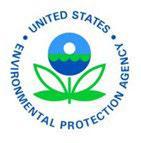
to, the device’s duration of use, distance of the light from the surface intended to be treated, the UV wavelength, the specific pest being targeted, the strength or wattage of the UV light bulb, the age of the UV light bulb, shadow areas or other factors.” EPA compliance advisory PDF
performance. Through this partnership IES and IUVA aim to cooperatively promote awareness of and improve the application of ultraviolet “disinfection” technology in the healthcare system, initially through the development of standardized methods of measurement of ultraviolet “disinfection” products including UV lamps, luminaires and lighting/radiating systems, utilizing both discharge (e.g. low-pressure mercury and xenon) and solid-state (e.g. light-emitting diode) technologies.

The US Food and Drug Administration (FDA) regulates UV devices as “electronic products” and has issued general guidance regarding effectiveness. According to the FDA, UVC is a known disinfectant for air, water, and nonporous surfaces, and has been used for decades to reduce the spread of bacteria. The FDA has advised that UVC may also deactivate some viruses by destroying their bonds of DNA and RNA, if the viruses are directly exposed to the radiation in the proper dose and duration.
However, at this time, the effectiveness of UVC in deactivating the SARS-CoV-2 virus is unknown, given the limited published data regarding the wavelength, dose, and duration of UVC required. The FDA also notes that direct UVC exposure poses health and safety risks to humans in that it can cause burns to the skin and eye injuries, and some UVC devices are also capable of generating ozone, the inhalation of which can be irritating to airways. FDA UVC FAQ
A series of American National Standards (ANSI standards) are envisioned. The first standard, Approved Method for Electrical and Ultraviolet Measurement of Discharge Sources, will detail laboratory procedures for the measurement and characterization of lowpressure mercury and other discharge sources. The second, Approved Method for Electrical and Ultraviolet Measurement of Solid-State Sources, will do the same for UV-LED components. IES and IUVA UVC collaboration

The The Illuminating Engineering Society (IES, est. 1906) and the International Ultraviolet Association (IUVA, est. 1999) have partnered to assemble experts in the measurement of ultraviolet C-band emissions (UV-C) to develop American National Standards for the measurement and characterization of UV-C device
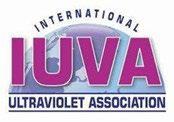
As the public learns about the effectiveness and limitations of GUV, the lighting industry must continue to provide standards and guidance that provide a complete framework for both safety and performance. Only then will lighting practitioners have the proper tools to design and install germicidal lighting in a way that inactivates viruses, kills bacteria, and ultimately save lives.
Frank Agraz has worked in the energy efficient lighting community for 27 years and is currently senior director of strategic initiatives at Eco Engineering. He is responsible for improving the customer experience by enhancing the company process and raising awareness of Eco Engineering as a leading design-build lighting retrofit provider. Prior to his current role, he founded Maneri-Agraz Enterprises, a national turnkey energy services company. Mr. Agraz is Lighting Certified by the NCQLP and is currently its Exam Committee Chair, the group that develops and maintains the content of the annual exam. He serves on the board as an At-Large Director for the Illuminating Engineering Society. Mr. Agraz graduated from Texas A&M University with a BS in Industrial Distribution.
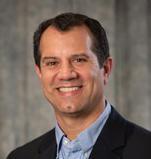
About
Eco Engineering is a national design-build energy services company specializing in providing turnkey lighting system upgrade services. We design and implement energy saving lighting and lighting control projects with compelling financial paybacks. Eco Engineering helps its customers reduce operating and maintenance expenses, boost employee productivity, while positively impacting the environment through reduced energy consumption. Visit https://ecoengineering.com/
The COVID-19 pandemic has sparked significant interest in applying germicidal ultraviolet (GUV) lamps to buildings as a layer of disinfection supporting other methods such as managing traffic flow and cleaning. This spells opportunity for lighting management companies but also the need for caution due to the risks inherent in GUV technology.
For decades, GUV lamps have been used to disinfect viruses and bacteria on surfaces, in manufacturing of certain products, and in water and wastewater treatment. While called “lamps,” with the category sometimes referred to as “germicidal lighting,” these sources do not provide useful visible illumination. They are instead emitters of energy in the ultraviolet portion of the electromagnetic spectrum that neutralize bacteria and viruses, including potentially SARS-CoV-2, the coronavirus that causes the disease known as COVID-19.
UV is categorized as A, B, or C according to wavelength, offering different germicidal effects and risks based on dosage, which in turn depends on intensity (wavelength, proximity, power) and duration of exposure. The higher the intensity, the shorter amount of time required to neutralize pathogens.
UV-A (315-400 nm) is typically used in products such as tanning beds, though it can have a germicidal effect at certain dosages. UV-B (280-315 nm) can have a germicidal effect at certain dosages as well, though it can be harmful to people and animals at high dosages. Bordering UV-A is a violet visible light band (400-405 nm) that has been demonstrated to be effective against certain bacteria and mold.
UV-C (180-280 nm, typically applied at 254-255 nm) has been shown to be effective against viruses and bacteria, including SARS-CoV-2, making it preferrable for GUV applications. UV-C is generally hazardous to humans and animals while also degrading organic materials, however, creating a challenge in how to apply it to buildings. Threshold limits for repeated human exposure to UV are expressed in IEC 62471, Photobiological Safety of Lamps and Lamp Systems.
In the past, UV-C was typically limited to specialized applications. The COVID-19 pandemic has stimulated the development of new approaches. As UV-C is a lineof-sight source, achieving true whole-room disinfection is often impractical, but it does make the emission controllable. Approaches vary in what portion of the room is disinfected, what pathogens are neutralized,

whether the pathogens are neutralized in the air or on surfaces or both, and how long neutralization takes. Low- and high-pressure mercury lamps, excimer lamps, and LEDs are used for GUV applications, with LEDs now in rapid development.
Room air disinfection: A device with an integral fan draws air past concealed GUV lamps. The device may mount on the wall. The device theoretically produces whole-room air disinfection, though it doesn’t disinfect surfaces.
Upper-air disinfection: GUV lamps are installed in a wall-mounted emitter or integrated into indirect-direct luminaires providing separately controlled up/down visible light and upward GUV emission. The luminaire may be controlled so that the GUV emits only at certain times, until a certain dosage is achieved, or during unoccupancy. This approach requires sufficient ceiling height and air exchanges.
Whole-room disinfection: Direct GUV devices are installed that disinfect air and surfaces. Note that “whole room” is again typically not entirely accurate, as GUV is dependent on line of sight. Several approaches may be used, some extraordinary in their novelty.
One is to deploy direct GUV devices that operate only when the space is unoccupied, such as a hospital operating room. In other buildings, a GUV system could be operated overnight in a strategy called passive GUV disinfection. Larger applications might be costeffectively served with a mobile robot.
GE Current took another approach, which was to develop a direct GUV device that is designed to operate within safety limits by reducing intensity. The company’s 365DisInFx UV-C luminaire is a puck-shaped device that mounts on the ceiling for coverage of up to 50 sq.ft. at a 10-ft. mounting height. The tradeoff is amount of time required to neutralize pathogens—up to three hours for the large majority and six hours for nearly all of the remainder, according to the company.
And another approach was commercialized by Ushio, which developed a 222-nm excimer (“Care222”) lamp that filters out harmful, longer UV wavelengths. Acuity Brands acquired the lamp for integration with select LED luminaires among three of its brands. The combination of the wavelength and controlled pulsing of the separately controlled GUV output is designed to enable operation within safety limits. According to
a Columbia University study, the GUV component can neutralize the majority of airborne pathogens in about eight minutes and the rest in about 25 minutes.
The right approach depends on the customer’s disinfection goals, application characteristics, and risk tolerance. Questions such as what pathogens need to be neutralized, where, and how quickly need to be answered.
When evaluating product, lighting management companies should seek trusted brands, as the technology is still developing. They should request evidence that supports disinfection and safety claims, look for safeguards that protect users and maintenance personnel, examine what maintenance is required to ensure safe ongoing operation, and evaluate the product carefully, including any controls. Being able to do all this effectively requires education and caution, as faulty or poorly designed products, misapplication, and installation error pose significant risks.
The pandemic is having a significant impact on American society. Even after it ends, many mitigation measures may become permanent, including GUV devices. Lighting management companies may benefit by getting to know the technology.
Craig DiLouie, CLCP, LC, principal of ZING Communications, Inc., is a consultant, analyst and reporter specializing in the lighting and electrical industries, and a regular contributor to LM&M. You may contact Craig at cdilouie@zinginc.com.


 Submitted by Associate Member Altech Electronics
Submitted by Associate Member Altech Electronics
Cerritos Towne Center is a premier shopping center located in the heart of Cerritos, Calif. With over 480,000 ft2 of land, this Towne Center is home to notable tenants such as Walmart, Best Buy, Kohl’s, HomeGoods, and Islands Restaurant. The center was in need of a reliable LED Lighting upgrade to continue providing a dynamic and safe shopping experience.
With an objective to improve the safety and sustainability of the property, the customer had a specific request to maintain an average of 2-4-foot candle (FC) readings across the entire Towne Center’s parking lot. In addition to improving light uniformity, the client was also looking to reduce glare and light trespass onto neighboring residential areas. To provide a suitable solution that will enhance the overall shopping experience, Altech Electronics conducted a complimentary photometric study of the project’s location.
As a result of the objectives the customer provided, Altech Electronics recommended approximately 150 units of our 150W LED Area Light Hyper Series (ALHS), instead of our 90-120W LED Area Light that would have sufficed for a 400W MH replacement.
The rated L70 150,000 hours lifespan and superior lumen efficacy of our lights (165 LPW) provided a significant improvement in both the sustainability and performance of the exterior parking lot lighting system.
Although we trust the integrity of our IES files and photometric software (AGI32), we took it a step further to verify the actual FC readings on site. As seen in the images, we projected FC calculations of 10.9 and 14.3 at two separate points in the parking lot; the actual meter readings on site were measured at 10.3 and 16.5 respectively. The difference between the photometric study projection and field light levels were minimal.
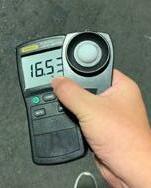

Due to the significant reduction in wattage-used from retrofitting to energy-efficient LED fixtures, Cerritos Towne Center will realize over $20,000 in annual savings on their lighting utility costs and enjoy an ROI in 2.7 years.
In summary, through our detailed photometric study, Altech Electronics recommended our 150W LED Area Light Hyper Series (ALHS) as the best solution for the customers' FC challenges. Thus, the total system wattage reduced was over 40,000W. Furthermore, we were able to validate the accuracy of our photometric tools by comparing actual to projected light levels.
In conclusion, Cerritos Towne Center was extremely satisfied with the overall solution Altech Electronics provided, which exceeded their expectations for the sustainability of the property, light performance levels, and the safety of their tenants and shoppers.
Projected FC from Photometric Study: 10.9 FC
Actual FC at Job Site (Measured at 2.5’ AFG): 10.3 FC
Projected FC from Photometric Study: 14.3 FC
Actual FC at Job Site (Measured at 2.5’ AFG): 16.5 FC
